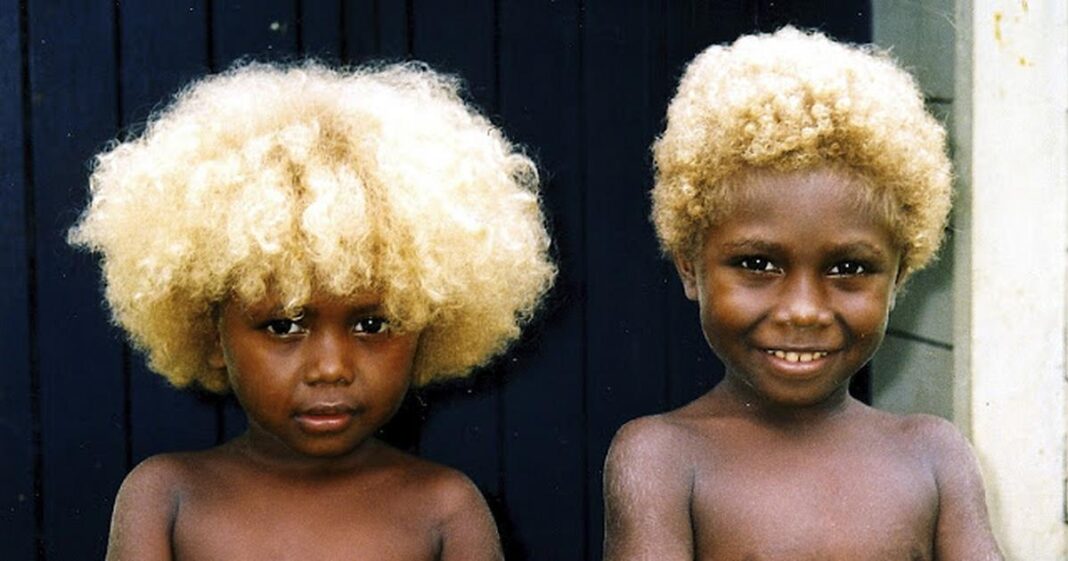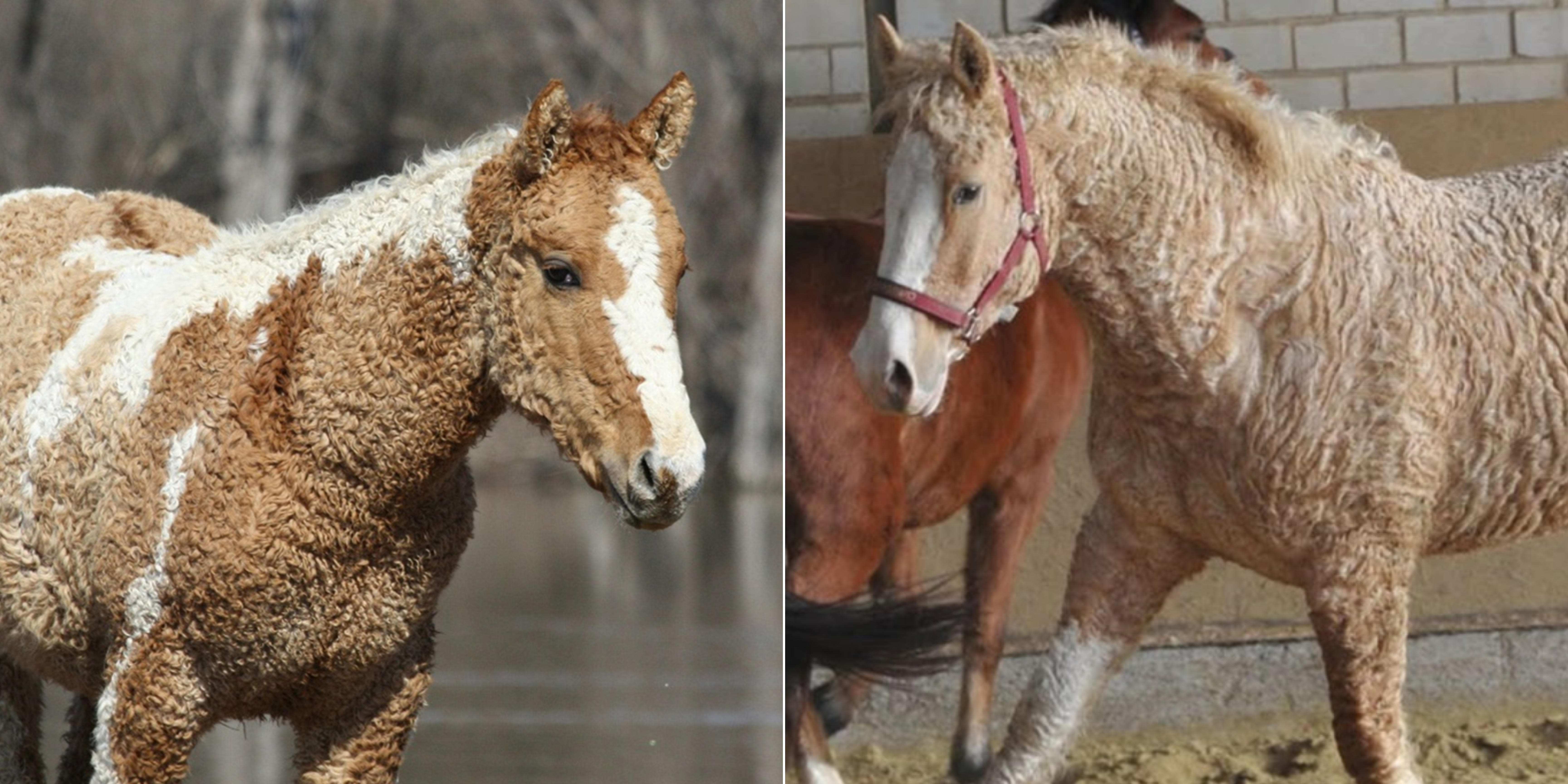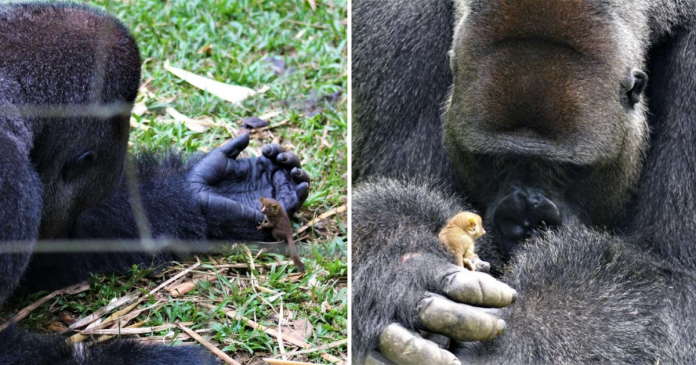How is it possible for Melanesians, who primarily reside east of Papua New Guinea in Oceania and have the darkest skin tone outside of Africa, to also possess blonde hair, when blondes are typically associated with Caucasians? This intriguing phenomenon has perplexed both individuals and scientists alike for a lengthy period.
“For many years, blond hair was attributed to Caucasians yet the Melanesians of Solomon Islands are one among the few groups with blonde hair outside Europe”

The Unique Melanesians are a group of dark-skinned island inhabitants in the South Pacific who migrated thousands of years ago, predating the arrival of Africans brought as slaves to the Americas.
In 1832, Jules Dumont d’Urville coined the term “Melanesia” to describe a distinct grouping of islands, both geographically and ethnically, separate from Polynesia and Micronesia.
Based on current scientific evidence, it is believed that the cultural, linguistic, and political diversity observed among Melanesians during the European arrival was a result of transformations that took place over the preceding 2,000 years. This fragmentation led to the coexistence of multiple languages and cultures, often within a single island.
“Until recently, the indigenous Melanesian people practiced cannibalism, head-hunting, kidnapping, and slavery, like the Asmat tribe”.

The Melanesian people residing in the Solomon Islands have attracted significant attention due to their unique combination of dark skin and blond hair. The Solomon Islands, situated in the South Pacific at the core of Melanesia, are positioned northeast of Australia and between Papua and Vanuatu. As an independent state within the British Commonwealth, the Solomon Islands hold a prominent position in the region.
Despite the fact that the indigenous Melanesian population of the islands has the darkest skin tone outside of Africa, it is intriguing to note that a small percentage, ranging from 5 to 10 percent, exhibit vibrant blond hair.
Several theories have emerged regarding the origins of blond hair among these individuals. Some propose that it could be a result of sun and salt exposure, while others speculate that their diet rich in fish might play a role. Another theory suggests a genetic inheritance from interbreeding with Americans or Europeans who initially inhabited the islands.

Geneticist Sean Myles, hailing from the Nova Scotia Agricultural College in Canada, conducted a thorough genetic analysis on the saliva and hair samples of 1209 residents of the Solomon Islands, specifically Melanesians. By comparing 43 individuals with blond hair to 42 individuals with brown hair, Myles discovered that the blond-haired individuals possessed two copies of a mutant gene. This gene was found in 26 percent of the island’s population. Interestingly, the Melanesian people have a native TYRP1 gene, which plays a role in both blond hair and melanin production. This gene differs from that of Caucasians and is distinct to the Melanesian population, as it does not exist in their genetic makeup.

Indeed, the gene responsible for blond hair among Melanesians is considered recessive, meaning it is more frequently observed in children than in adults. It is noteworthy that as individuals age, their hair tends to darken. This observation adds support to the theories suggesting that black Africans were the original Homo sapiens, and all other races emerged from the black African lineage.
Presently, Melanesia is home to a rich linguistic diversity, boasting over 1,000 languages. Over the centuries, through trade and cultural exchanges, pidgins and creole languages have evolved in the region even before the arrival of Europeans. Christianity has become the predominant religion, with numerous missionaries spread across the area. However, it’s important to note that some individuals still adhere to their indigenous beliefs, which involve the worship of various spirits inhabiting the forests, mountains, and swamps.

Similar to other parts of the world, the tropical region of Melanesia has faced its share of social challenges. These include issues such as alcoholism, crime, and significant health concerns like malaria. Additionally, the prevalence of AIDS is particularly notable in Papua New Guinea, posing a significant health risk to the population in that area.
Despite the challenges faced by the region, Melanesia, with its stunning islands, is often perceived as a paradise by many. The area is renowned for its captivating history and rich cultural heritage, offering a sense of exoticism. Moreover, the people of Melanesia are often regarded as some of the happiest and friendliest individuals in the world, further enhancing the allure of the region.






H/T: auxx.me



